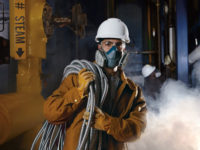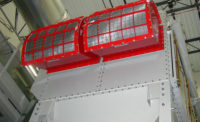With the number and variety of materials in manufacturing and engineering industries, it is easy to conceptualize how a rogue element could compromise your facility's indoor air quality (IAQ). Every action seems to produce an air contaminant — sawing, packing, stacking and every move releases invisible particles.
To mitigate inevitable negative influences, facilities can analyze, clear and maintain air quality by increasing awareness of the causes and procedures to keep them in check.
Identifying IAQ issues
Addressing issues begins with knowing what industries are most susceptible to having compromised IAQ and the causes — apart from the apparent industrial dust and debris. Instances of air contamination vary, including countless activities from mixing materials to moving them from one place to another. Some examples include:
- Metalworking: Combustion vapors containing harmful pollutants like manganese and lead oxide are toxic.
- Shipping: Breaking down and assembling corrugate releases fibers into the air.
- Car manufacturers: Vehicle coatings and oils released during chemical emissions.
- Food processing: Chemical reactions from mixing or changing temperatures of liquid foods and beverages release particulates.
Pollutants nest in old building materials and worker habits, such as smoking. Compounded with emissions and debris from regular operations, IAQ analysis often reveals multiple problematic sources. At this stage, it is ideal to seek out third-party experts to audit everything from HVAC systems to insulation to ensure compliance.
You may also identify IAQ issues by analyzing the health of the workforce. Pollutants and other air quality issues can cause numerous health side effects that damage work performance and morale. Some of these include fatigue, headaches and long-term condition like respiratory ailments.
Clearing the air in the facility
Organizations like the Occupational Safety and Health Administration are one of many that create guidelines as priceless foundations for comparing IAQ with standardized metrics. Since airborne contaminants are inevitable in many facilities, exposure limits exist to inform facilities of the difference between safe and unsafe sizes, compositions and densities of airborne pollutants. Auditing the IAQ to compare with industry standards asserts what you should prioritize for workers’ health and safety.
Options for correcting poor IAQ range depend on industry and priorities. For instance, consider switching to renewable, clean energy sources if fossil fuels emit harmful airborne pollutants. If the issue is poor ventilation, consider a complete replacement with materials specifically attentive to chemical emissions related to your industry.
Sometimes, IAQ correlates with cleanliness. Some facilities find a deep clean solves most of the problem — alongside installing some prevention and maintenance such as dust collectors. Loose dust could create homes for bacteria in moist areas or burn on hot surfaces, releasing musty smells and potentially causing safety incidents. However, if a facility works with messy materials, a deep clean will need to happen more than once.
It is vital to see this as an investment in improving output in operations. Ridding large machines of excess debris can improve efficiency on top of helping operators feel better physically and mentally. Electronics last longer since they are less likely to malfunction or corrode because of airborne contaminants.
Continuing IAQ maintenance
After finding out how clean the air is in your facility and taking action to remedy it, the key to sustainable infrastructure is maintenance. Schedule regular cleaning and filter changes if issues arise due to dusty ventilation or poor filtration. Byproducts of labor — such as cutting metal or working with chemicals — could be the main issue.
Therefore, it’s time to research modern industry options to see how your facility can step into a healthier future with cleaner air. Training employees on safer and healthier trends could change the IAQ of an entire manufacturing industry. Internet of Things connected devices like monitors could keep tabs on IAQ, providing data for a facility to discover continued improvements.
A facility can also perform regular air testing for harmful contaminants like asbestos or mold and take actions inspired by these results, such as adjusting humidity. As previously mentioned, looking for third-party guidelines and certifications provides invaluable frameworks for standardization, but modeling or obtaining one may be the starting point.
Leadership in Energy and Environmental Design certification provides more holistic perspectives about a facility’s sustainability and if construction, renovation and activity help or harm the environment. They can also suggest methods like weatherstripping to help control airflow.
Air quality in industry
Committing to clean air in your facility is non-negotiable. For the health of staff members, the business and the planet, you must identify and address pollutants and other contaminants. Though having the cleanest air in the sector will be a long-term commitment, everyone can take actionable steps over time to improve not only air quality, but the standards of the industry, too.



